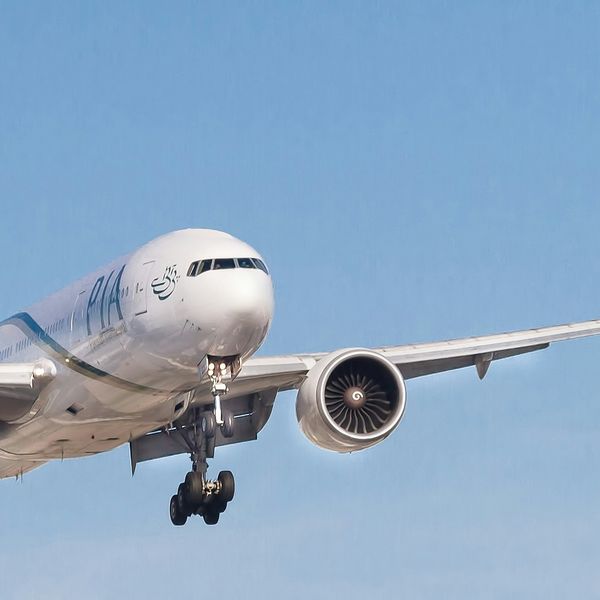Pakistan removes minimum export price for rice exports
Pakistan wins Indonesian tender of 200,000 tons rice

Javed Mirza
Correspondent
Javed Iqbal Mirza is an experienced journalist with over a decade of expertise in business reporting, news analysis, and investigative journalism. His work spans breaking news, editorial pieces, and in-depth interviews.

Ship crane lift-off slings of rice bags cargo from truck and load into ship
Shutterstock
Pakistan has removed the minimum export price (MEP) on all rice varieties. The development comes following India’s decision to lift its MEP on rice.
This policy change is expected to sustain the FY24’s volumetric growth of Pakistan’s rice exports into FY25, although earnings from these exports are projected to decline.
Chela Ram, Chairman Rice Exporters Association of Pakistan (REAP), said government had lifted the Minimum Export Price (MEP) of $950 per ton, a move that rice exporters welcomed as long overdue.
He informed that Pakistan had already won a tender to export 200,000 tons of rice to Indonesia. “We lost the earlier Indonesian tenders to Vietnam because of high MEP.”
Chairman REAP said country had a bumper rice crop and there was sufficient surplus stock to be exporter. “Because of the bumper crop, local commodity prices are also lower, and exports wouldn’t impact local prices.”
India lifted its ban on non-basmati white rice exports and introduced a minimum export price of $490 per ton. The day prior, the Indian government removed the 20% export duty on non-basmati white rice and halved the export duties on three other rice categories, reducing them from 20% to 10%. These categories include "rice in the husk (paddy or rough)," "husked (brown) rice," and "parboiled rice."
Why did India impose a ban on rice exports?
On July 20, 2023, India imposed a ban on rice exports due to concerns over domestic food security and rising inflation. The decision stemmed from irregular monsoon rains that impacted rice production, coupled with increasing food prices. With global demand for rice surging, India prioritized securing domestic supply to stabilize prices and maintain social stability.
Who are the major rice exporters in the world?
The world's top rice exporters include India, followed by Thailand and Vietnam. India exports both basmati and non-basmati rice, while Thailand is known for jasmine rice. Vietnam focuses on white, jasmine, and glutinous rice. Pakistan is a major exporter of basmati rice, and the U.S. specializes in long- and medium-grain rice. Myanmar and Cambodia are also emerging exporters, with Myanmar focusing on white and parboiled rice and Cambodia increasing its jasmine rice exports.
What is the impact on Pakistan's economy?
In FY24, Pakistan's rice production increased by 35% year-on-year, reaching 9.9 million tons. The Indian rice export ban and Pakistan's higher production allowed the country to export 6.0 million tons of rice, a 62% year-on-year increase from last year’s 3.7 million tons. This marked Pakistan's highest annual rice export. In value terms, exports surged to $3.9 billion, an 83% year-on-year increase from $2.1 billion in FY23. In the first two months of FY25, Pakistan's rice exports totaled 340,703 tons ($465 million), maintaining the same volume as last year but doubling in value due to improved prices.
According to the U.S. Department of Agriculture (USDA), Pakistan's rice production is expected to remain around 10 million tons. In FY24, Pakistan ranked as the 4th largest rice exporter globally.
Analyst Shagufta Irshad of JS Global notes that Pakistan’s export growth may slow down as Indian exporters re-enter the market. The USDA projects Pakistan’s rice export volume will decline to 5.6 million tons in FY25, though the drop could be steeper if India intensifies competition. Shagufta predicts that Pakistan's rice export revenue may fall to $3.48 billion in FY25, a 12% year-on-year decline. In a worst-case scenario, if prices drop by 10% and export volume falls to 4 million tons, Pakistan’s export revenue could decrease to between $3.3 billion and $2.4 billion.







Comments
See what people are discussing